The Prosecco Hills are one of Italy’s best kept secrets. This is the name given to the districts of Conegliano and Valdobbiadene about an hour north of Venice; a region of steep hills carpeted in vines, set against the mountainous backdrop of the Pre-Alps. The landscape is characterised by its ‘ciglioni’, the narrow grassy terraces upon which the vines are grown, and which hug the steep ridges. But despite the region’s beauty, it doesn’t see as many tourists as other wine growing regions in Europe.
“It's still an area to be discovered,” explains Vania De Paoli, a guide who grew up in the area. “There's a good mix between nature tourism, with quiet hiking and cycling trails to be explored, and of course there’s the wine and the sumptuous food. In Italy, every region is different for food and ours is very good - not being a touristy area, there’s lots of authentic and inexpensive restaurants.
“Rather than having big commercial wineries, there tend to be smaller, family-run wineries. Most of the best prosecco isn't exported internationally, so to taste the best wine you have to come and visit.”

The Prosecco Hills have been a winemaking region since Roman times - the first mention of it is thought to be in Pliny the Elder's Naturalis Historia, written in 77 A.D. However, the thin-skinned green grape variety ‘glera’, which is used to make Prosecco, has only been grown in the region for the past 300 years or so.
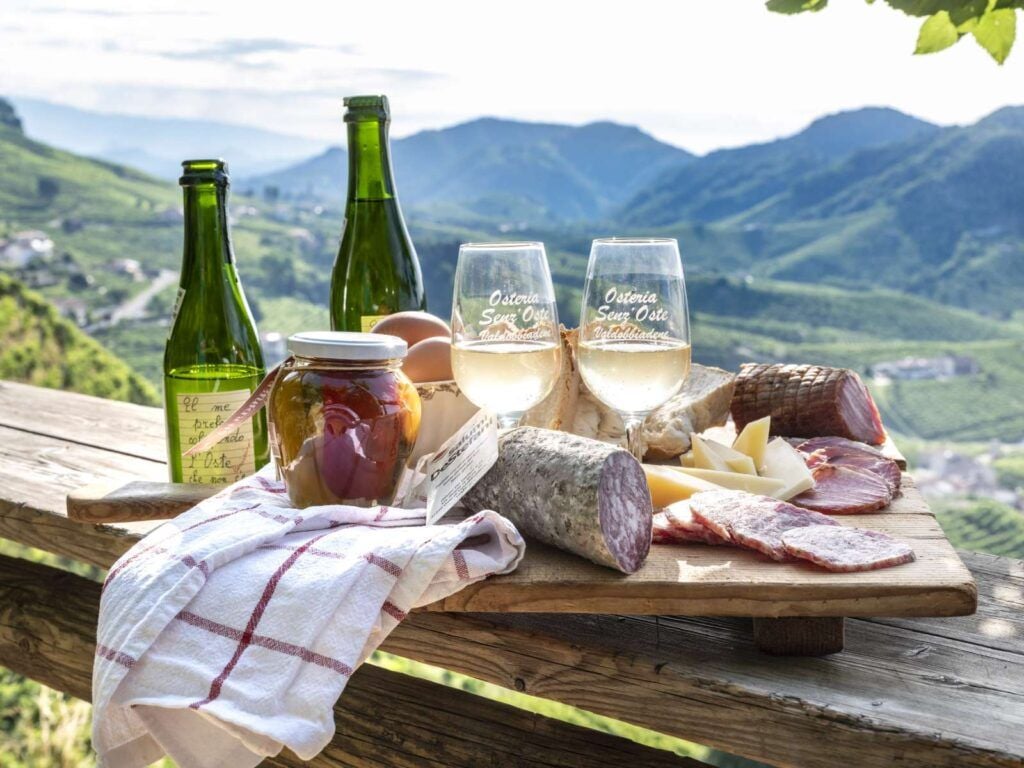
According to local winemaker Laura Pietrovecchio, the combination of climate and landscape (known in the industry as terroir), is what makes this such a good wine growing region.
“The Valdobbiadene area is a totally south-facing area that guarantees a high sugar level in the grapes,” she says. “There is a constant ventilation coming from the Pre-alps that eliminates humidity on the leaves. In this zone there is a clay and limestone soil that is a perfect water reserve for the plants in the summer season when water is scarcer - this gives our wines their mineral taste.
“All of this results in grapes that are rich in aromas and well-irrigated vineyards without any stagnation, thanks to the natural slopes that drain away water and the breezes that rapidly dry the soil."
Laura, like many other locals, is keen to stress the difference between the Prosecco Superiore DOCG - a specific 18.6 square mile (30 sq km) zone of guaranteed and controlled origin - and the larger Prosecco DOC zone.
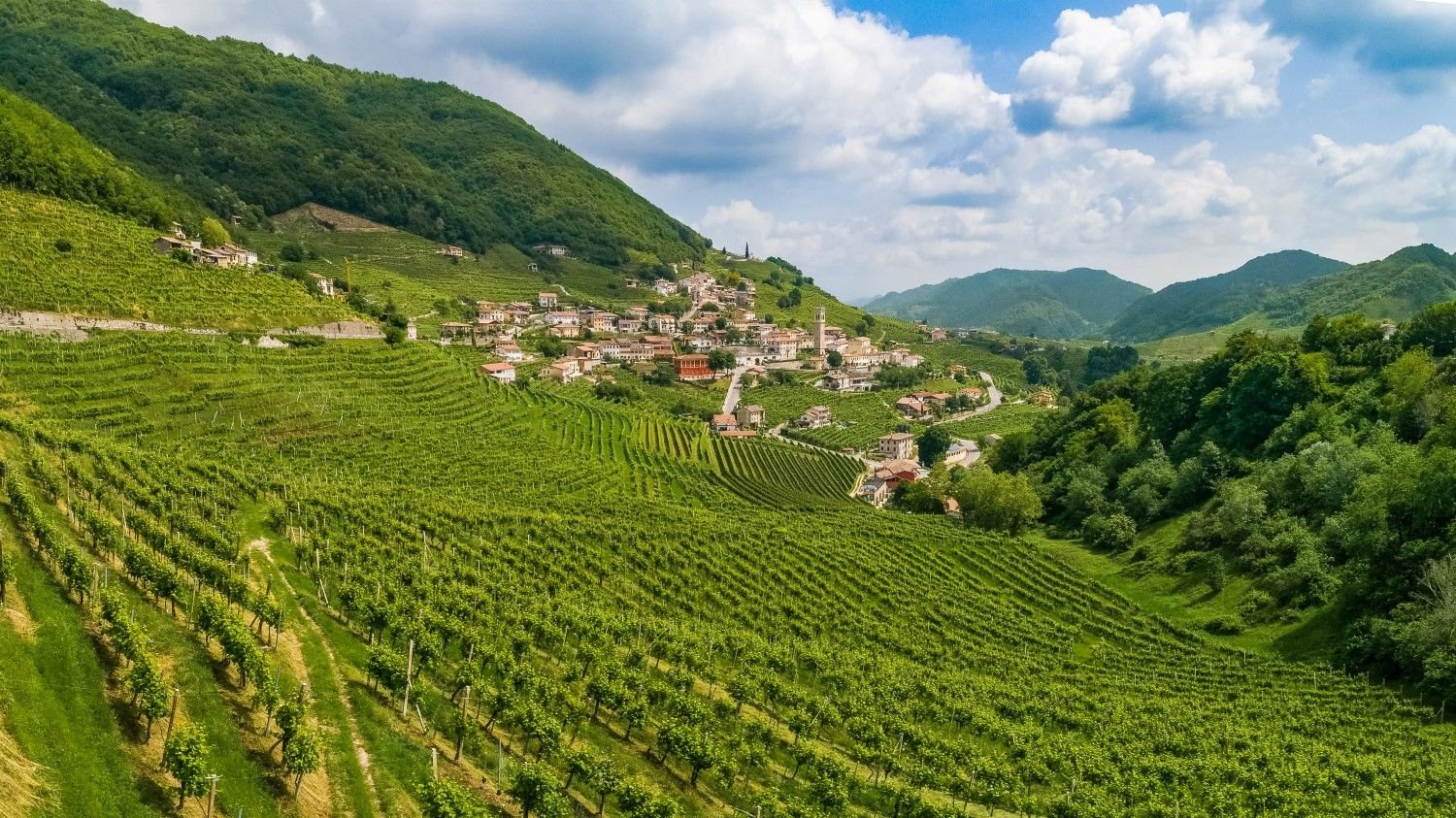
“In the steep vineyards of the DOCG zone, the harvest takes place by hand, making a careful selection of grapes (not mouldy, dry or unripe) that are carried immediately to the pressing machine. All the works are by hand because the steepness of the hills does not allow the use of any machinery,” Laura says.
“After the harvest, the grapes are brought to the winery and placed in special presses that act on the berries in a gentle way (inside this machine there is a plastic ‘lung’ that extracts the primary aromas of the grapes). The production regulations state that from 100 kilos of grapes one can obtain a maximum of 70 litres of wine.”
Real prosecco is a sumptuous sparkling wine. Its colour is a pale straw, with brilliant highlights that vary from pastel shades to golden tones
Vineyards in the DOC are located on flat plains, and machine-harvested. This means the prosecco in the DOC is produced much more cheaply, and in larger quantities than in the DOCG. It’s this cheaper version of the wine you’ll find in your local supermarket. In order to try the real thing, you’ll need to come to the Prosecco Hills.
“The finest quality prosecco is a sumptuous sparkling wine. Its colour is a pale straw, with brilliant highlights that vary from pastel shades to golden tones,” Laura says. “It has very complex aromas, which recall white-fleshed fruits such as apples and pears, citrus fruits, the intensity of peach and apricot and a touch of rose. Its flavour is elegant with a great freshness and a delicate, natural perlage (or effervescence).”
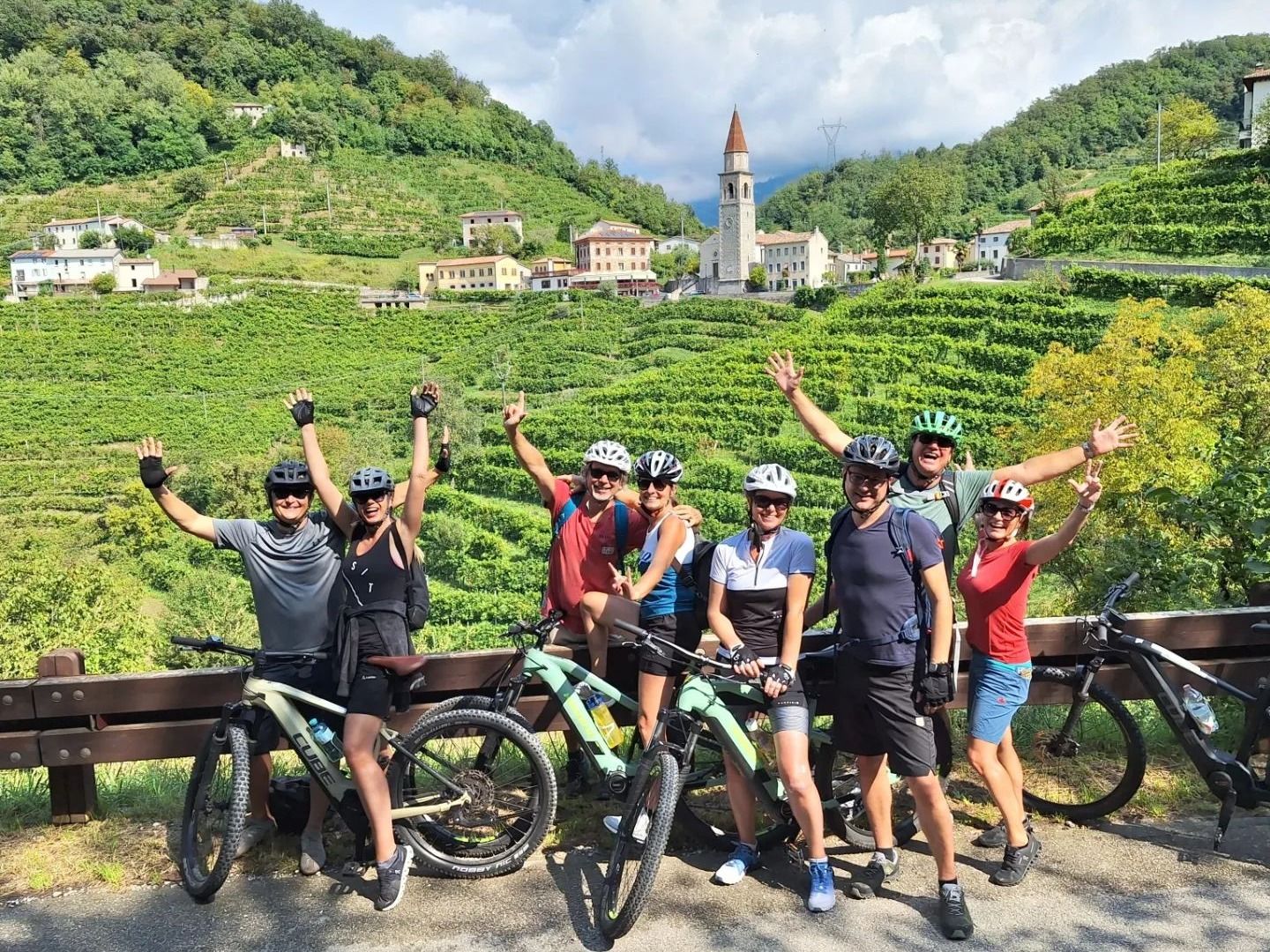
The Prosecco Hills region has a long tradition of winemaking and other agriculture. In fact, in 2019, the DOCG zone was inscribed on the UNESCO World Heritage List as a cultural landscape. But tourism is a much newer industry here.
“Tourism is still evolving,” Vania says. “The guests we've always had for the past 15 years or so are Germans and Austrians, because of their geographical proximity. Now, since prosecco is more well known, you get more nationalities.”
“Many groups just drive through, stopping at each winery for quick tastings and purchases. But outdoor tourism is beginning to take off here. I think the best way to visit it is by doing a cycling or walking trip: you see more of the countryside. The Pre-Alps are very close - you can go hiking and visit the little huts where the local cheeses are made.
Many groups just drive through, stopping at each winery for quick tastings and purchases. But outdoor tourism is beginning to take off here
“There is so much potential for active tourism to really become the norm here and have a positive impact on local communities, with tourists extending their stay and thus generating a positive economic impact in the villages they visit. Despite its increase in popularity since the UNESCO designation, the area is a world away from the mass tourism and crowds you find in Venice.”
You won’t find large, international chain hotels here either. Accommodation tends to be in family-run boutique hotels and farmhouses, which are slowly increasing in number. Elisa Ceccato, who grew up in the region and moved away for 15 years to become a chef, is one such agriturismo owner.
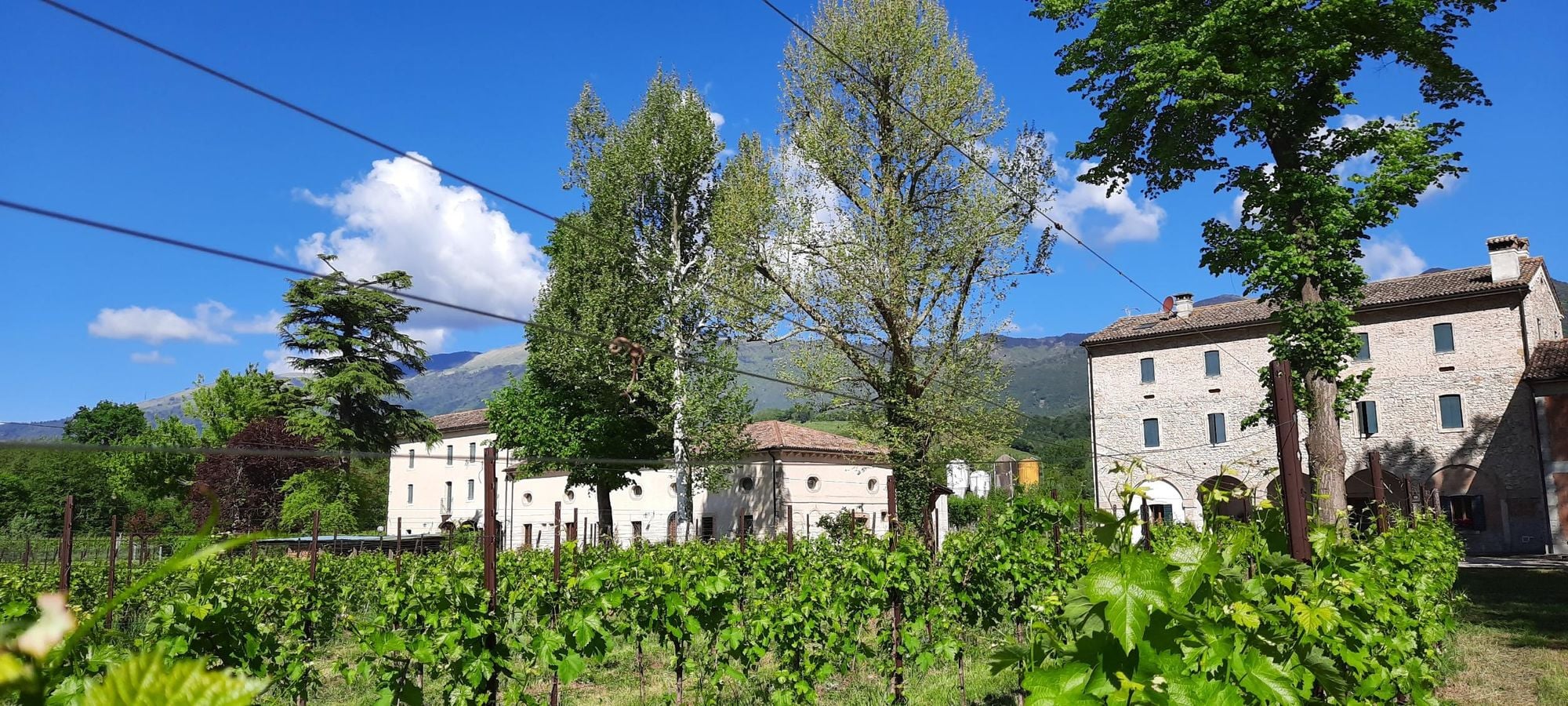
“I decided to come back home because I'm in love with my family and my hometown,” she says. “I took over a historic country house from the 16th century, which includes the ancient molino, or mill. I renovated it in the typical style of houses that we have here around, using stones and wood.
“My grandmother and grandfather had their own animals and a vegetable garden. I used to help them, but I stopped when I moved away. Eventually I realised that this was how I wanted to be a chef; raising my own animals and growing local vegetables. The food we produce tastes much better. And it’s a way of living and thinking that makes me happy - to plant something, see it grow and give it what it needs. We eat only vegetables that are in season, which ensures they are all full of vitamins and minerals. They are at their best.”
Visitors to Elisa’s agriturismo will be able to try traditional Italian meals made with her homegrown vegetables and the animals she farms, alongside her homemade pickles and jams. She’s particularly proud of the trout she farms onsite, which she serves smoked, pickled or as a tartare - in her opinion, this is the best food pairing for the region’s prosecco wine.
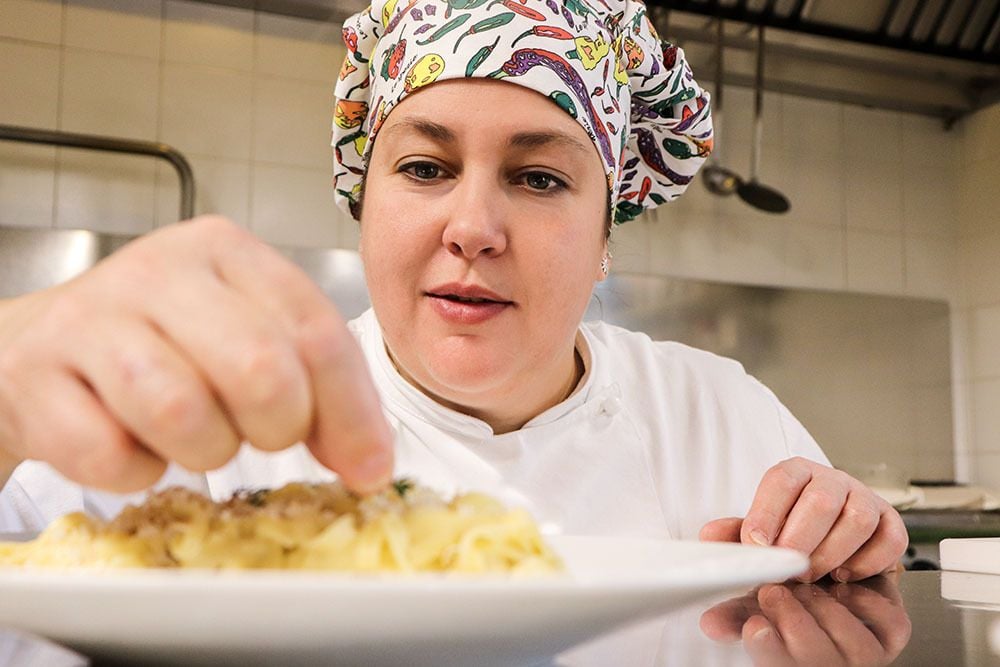
But despite the region’s centuries'-old traditions, the climate around it is changing. Both Elisa and Laura are frontline witnesses to its effects on the Prosecco Hills.
“It's not like before, when we had specific seasons where we could grow specific vegetables,” Elisa says. “Every year it’s changing. We have heavier storms which can cause damage to the vines and crops, making harder to rely on seasonal produce.”
We have so much to offer here beyond wine-tasting, from nature trails to traditional villages with a fascinating culture
Laura is a graduate student in oenology (the study of wines) at the University of Padua, and is researching the effects of climate change in the DOCG areas in her thesis.
“I’m very worried about the future of the Prosecco Hills because climate change is already happening,” she says. “Every year it gets hotter and hotter and, like most places across the world, we are more exposed to unpredictable weather events.”
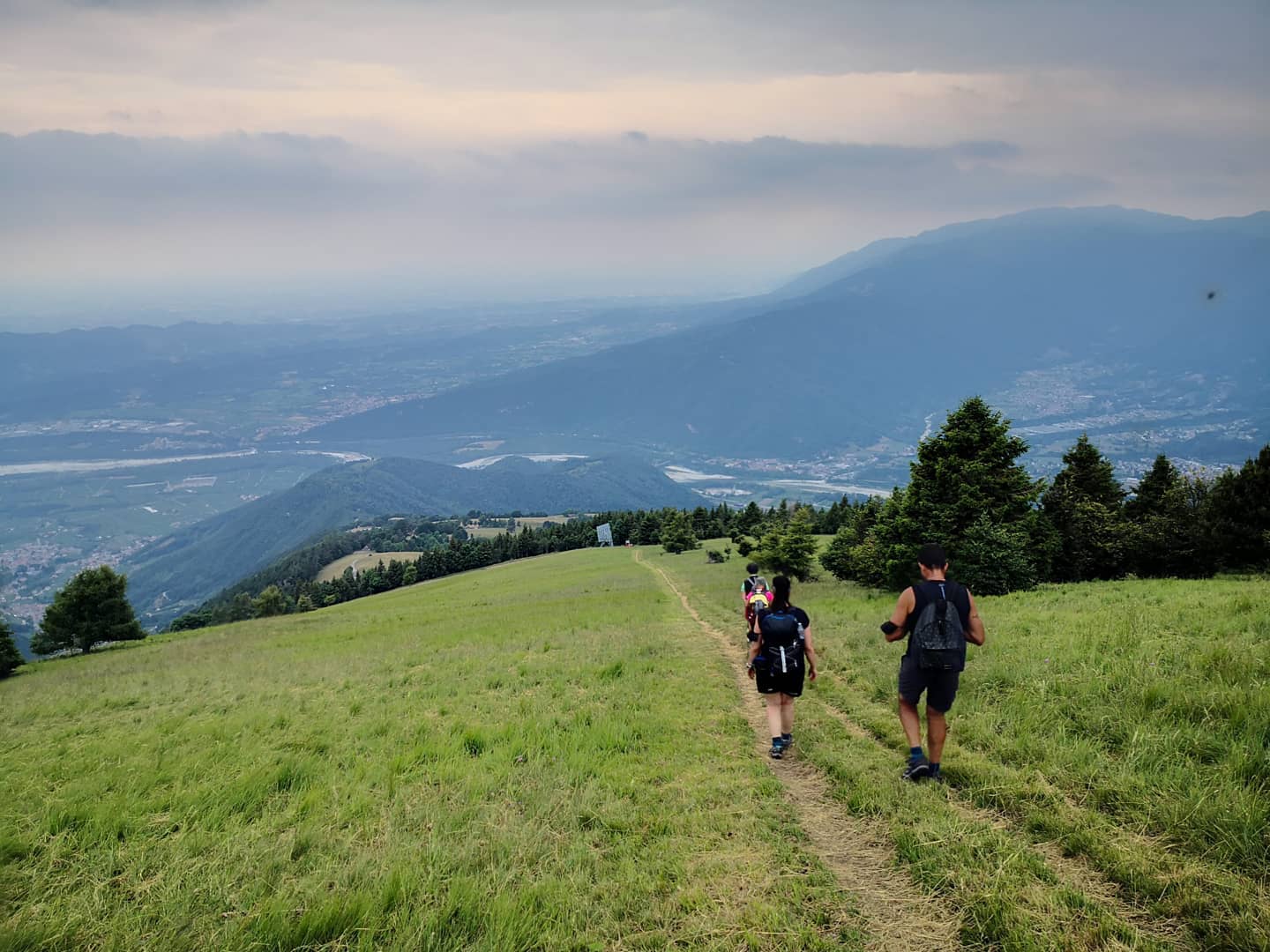
Agriculture and winemaking are currently the chief forms of income in the region. But in an era of climate change, it’s important not to be solely dependent upon them. The introduction of tourism into the region is an ideal alternative source of income for local communities. This is why Vania believes it is important for the tourism offering to extend beyond its wine-tasting holidays.
“Now of course prosecco is what attracts people to the area,” she says. “But you have to think about what would happen in ten years if there’s a new prosecco somewhere else. The smart thing to do is to build an offering around the area that can stand without the prosecco - a bit like Tuscany, which is no longer known just as the birthplace of Chianti, but is famous on its own. We have so much to offer here beyond wine-tasting, from nature trails to traditional villages with a fascinating culture.”

One example of this diversification is the newly created Cammino delle Colline del Prosecco - also known as the Prosecco Trail - a 31.6 mile (51km) walking trail through the sharp ridges, steep slopes and fertile valleys of this stunning region.
For now, prosecco production in the region is thriving. Visit to sample a glass of this delicate, complex sparkling wine. But make sure you explore what else the Prosecco Hills has to offer as well, from its rarely-trodden hiking trails to its farm-to-table food scene.
Inspired? Check out our Hike and Bike in Italy's Prosecco Hills adventure, which hikes sections of the Prosecco Trail and includes a stay at Elisa's agriturismo.



